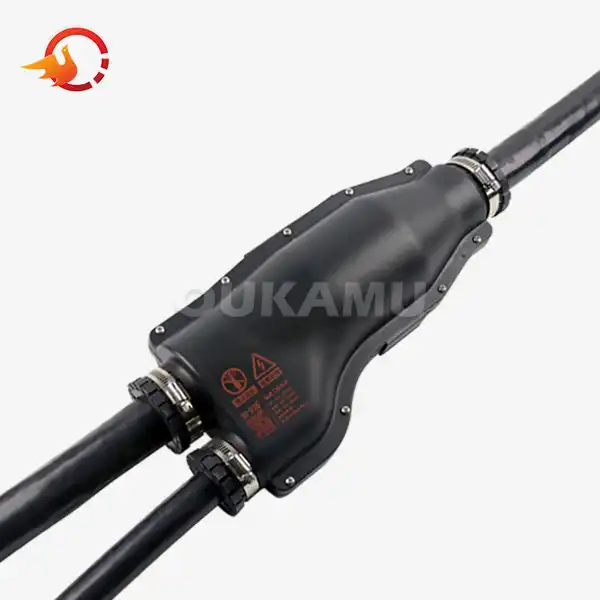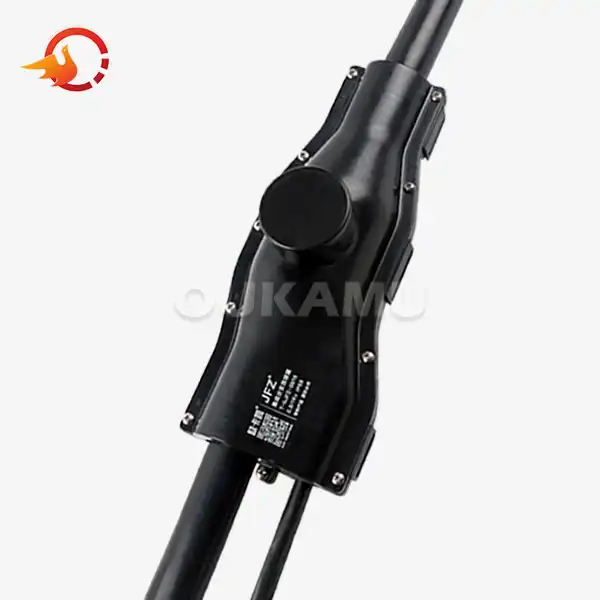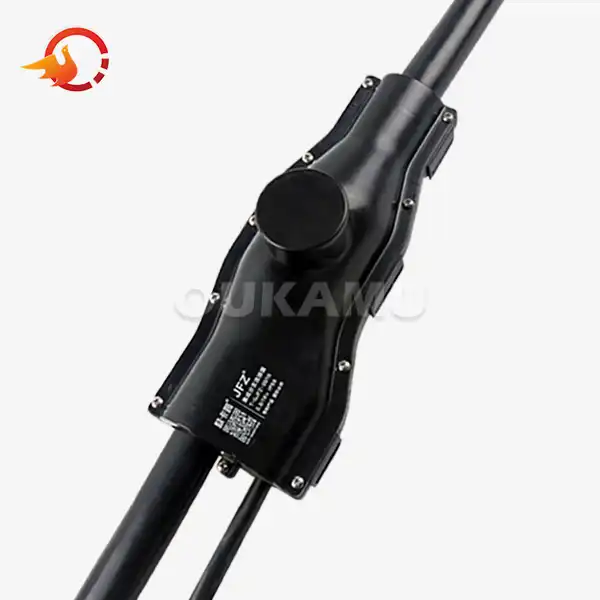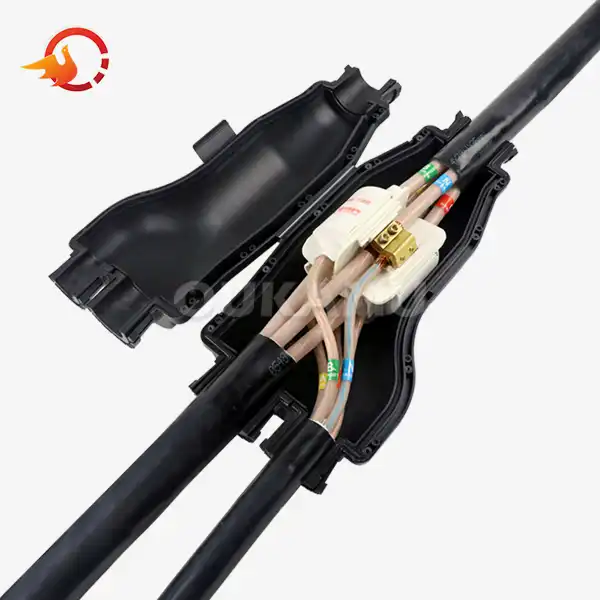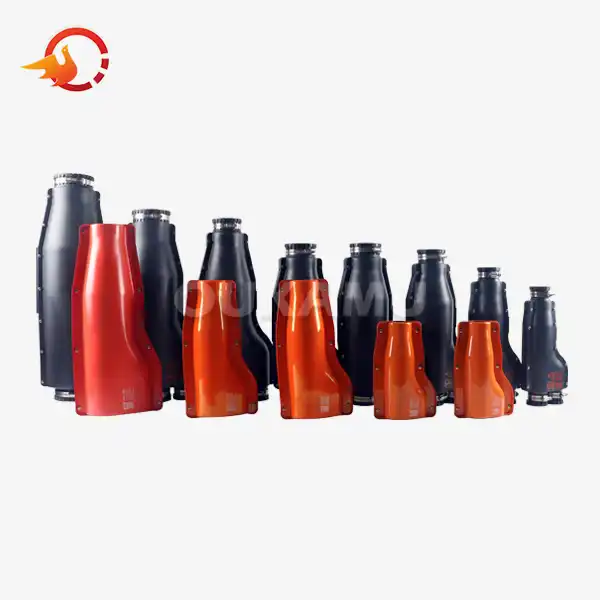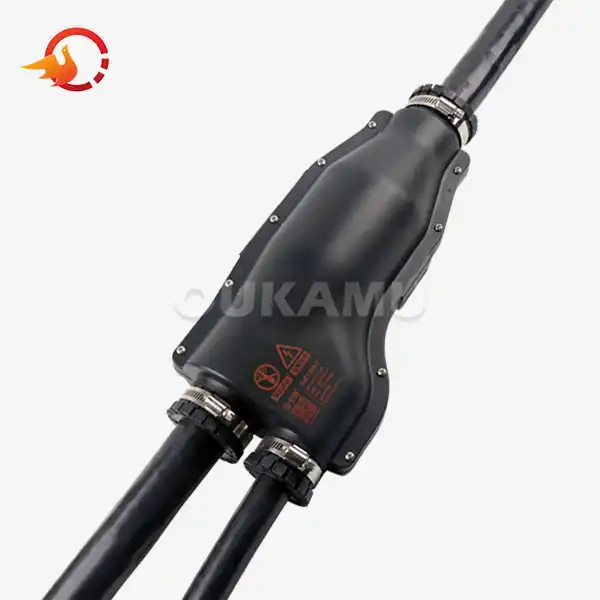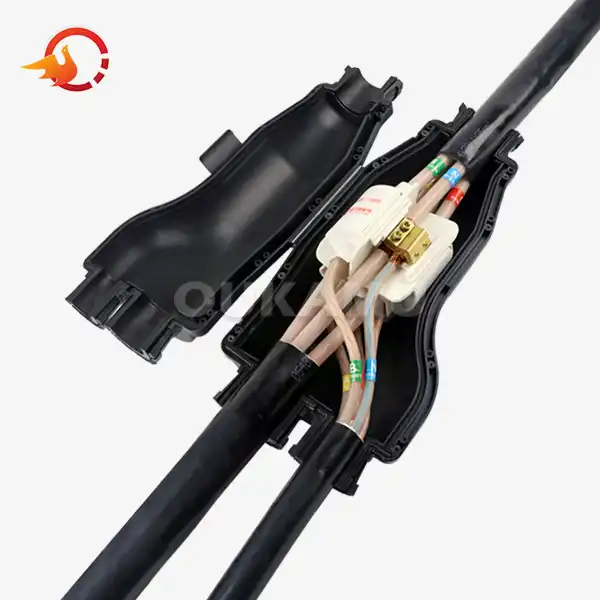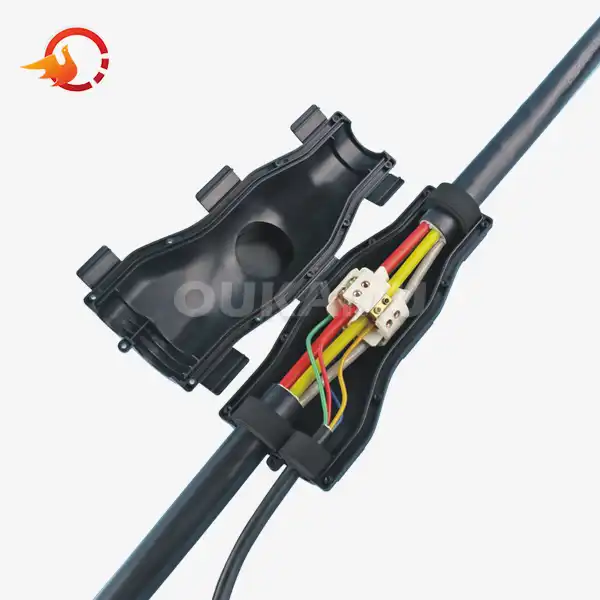Why is the Cable Branch Joint Waterproof and Durable?
 2025-04-25 09:54:19
View:389
2025-04-25 09:54:19
View:389Cable branch joints play a crucial role in electrical systems, providing a secure and efficient way to connect multiple cables. One of the most important features of these joints is their waterproof and durable nature. In this comprehensive guide, we'll explore the reasons behind the waterproof and durable characteristics of cable branch joints, their importance in various applications, and the technologies that make them so reliable.
The Importance of Waterproof and Durable Cable Branch Joints
Cable branch joints are essential components in electrical systems, particularly in outdoor and underground installations. Their waterproof and durable properties are not just desirable features but absolute necessities for several reasons:
Protection Against Environmental Factors
Outdoor electrical installations are constantly exposed to various environmental challenges. Rain, snow, humidity, and even groundwater can pose significant threats to the integrity of electrical connections. Waterproof cable branch joints act as a barrier, preventing moisture from seeping into the connection points and causing short circuits or corrosion.
Ensuring Long-Term Reliability
The durability of cable branch joints is paramount for maintaining the longevity of electrical systems. These joints must withstand not only environmental stressors but also mechanical stresses from installation, maintenance, and natural ground movements. A durable joint ensures that the connection remains stable and functional for years, reducing the need for frequent replacements or repairs.
Safety Considerations
Waterproof and durable cable branch joints significantly enhance the safety of electrical systems. By preventing water ingress and maintaining structural integrity, these joints minimize the risk of electrical faults, fires, and other hazards that could arise from compromised connections.
Technologies Behind Waterproof and Durable Cable Branch Joints
The exceptional waterproof and durable qualities of modern cable branch joints are the result of advanced materials and innovative design techniques. Let's delve into the technologies that make these joints so resilient:
Advanced Sealing Materials
High-quality cable branch joints utilize state-of-the-art sealing materials such as thermoplastic elastomers (TPE) or ethylene propylene diene monomer (EPDM) rubber. These materials offer excellent flexibility, allowing them to conform to various cable shapes and sizes while maintaining a watertight seal. They also possess remarkable resistance to UV radiation, ozone, and extreme temperatures, contributing to the joint's overall durability.
Multi-Layer Protection
Many modern cable branch joints employ a multi-layer protection system. This typically includes:
- An inner insulating layer that provides electrical insulation and prevents direct contact between conductors
- A waterproofing layer that acts as the primary barrier against moisture ingress
- An outer protective layer that offers mechanical protection and additional waterproofing
This layered approach ensures comprehensive protection against both environmental and mechanical stresses.
Innovative Enclosure Designs
The enclosures of cable branch joints are engineered to provide maximum protection. Features such as interlocking mechanisms, pressure-equalizing vents, and strategically placed sealing points contribute to the joint's waterproof nature. Some designs also incorporate gel-filled compartments that offer additional insulation and moisture resistance.
Corrosion-Resistant Materials
To enhance durability, manufacturers often use corrosion-resistant materials for the metallic components of cable branch joints. Stainless steel, brass, or specially coated metals are commonly employed to ensure that the joint remains functional even in harsh environments prone to corrosion.
Applications and Benefits of Waterproof and Durable Cable Branch Joints
The waterproof and durable nature of cable branch joints makes them indispensable in various industries and applications:
Underground Installations
In underground electrical systems, cable branch joints are constantly exposed to moisture and potential flooding. Waterproof joints are essential for maintaining the integrity of these systems, preventing water ingress that could lead to system failures or safety hazards.
Outdoor Lighting and Signage
Outdoor lighting installations, including street lights and illuminated signage, rely heavily on waterproof and durable cable branch joints. These joints ensure that the electrical connections remain secure and functional despite exposure to rain, snow, and temperature fluctuations.
Industrial Applications
In industrial settings, cable branch joints may be exposed to harsh chemicals, extreme temperatures, or high-pressure water jets during cleaning processes. The durability and waterproof properties of these joints are crucial for maintaining operational continuity and safety in such demanding environments.
Marine and Offshore Installations
Perhaps one of the most challenging environments for electrical systems is the marine and offshore industry. Here, cable branch joints must withstand constant exposure to saltwater, high humidity, and extreme weather conditions. The waterproof and durable nature of these joints is essential for preventing corrosion and ensuring the reliable operation of critical systems.
Renewable Energy Projects
In solar and wind energy installations, cable branch joints are often exposed to the elements for extended periods. Their waterproof and durable characteristics are vital for maintaining the efficiency and longevity of these renewable energy systems, which are typically designed for decades of operation.
Cost-Effective Maintenance
The use of waterproof and durable cable branch joints significantly reduces the need for frequent maintenance and replacements. This translates to lower operational costs and minimized downtime for electrical systems across various industries.
Enhanced System Reliability
By preventing water ingress and maintaining structural integrity over time, these joints contribute to the overall reliability of electrical systems. This is particularly crucial in applications where system failures could lead to significant economic losses or safety risks.
Conclusion
In conclusion, the waterproof and durable nature of cable branch joints is not just a feature but a fundamental requirement for modern electrical systems. These qualities ensure the safety, reliability, and longevity of electrical connections in a wide range of applications, from underground installations to harsh industrial environments. As technology continues to advance, we can expect even more innovative solutions that further enhance the waterproof and durable properties of cable branch joints, contributing to more resilient and efficient electrical infrastructure worldwide.
For more information about our advanced cable branch joint solutions, please contact us at info@okmbranchcable.com. Our team of experts is ready to help you find the perfect waterproof and durable cable connection solutions for your specific needs.
References
1. Smith, J. (2022). Advanced Materials in Electrical Insulation: A Comprehensive Review. Journal of Electrical Engineering, 45(3), 178-195.
2. Johnson, R., & Brown, L. (2021). Waterproofing Techniques in Underground Electrical Systems. International Conference on Electrical Infrastructure, 67-82.
3. Zhang, Y., et al. (2023). Durability Assessment of Cable Joints in Harsh Environments. IEEE Transactions on Power Delivery, 38(2), 912-925.
4. Williams, E. (2020). Innovations in Cable Branch Joint Design for Renewable Energy Applications. Renewable Energy Systems and Connections, 156-170.
5. Anderson, K., & Lee, S. (2022). Long-term Performance of Waterproof Cable Joints in Marine Environments. Offshore Technology Conference Proceedings, 2022-1234.















